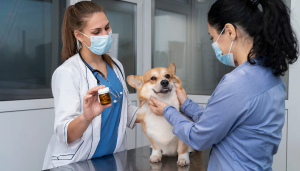
Understanding Pet Healthcare Services – What to Expect During a Vet Visit
Taking your furry friend for regular veterinary check-ups is crucial for maintaining their health and well-being. However, for many pet parents, vet visits can be a daunting experience, filled with uncertainty and stress. This article aims to demystify the process by providing a comprehensive overview of what to expect during a routine vet appointment, enabling you to participate in your pet healthcare service journey actively.
The Initial Check-In
Upon arriving at the veterinary clinic, you’ll be greeted by the receptionist at the front desk. They will assist you with checking in and may request you to fill out a form detailing your pet’s information and the purpose of your visit. Once completed, you and your pet will be directed to the waiting area, where you can sit comfortably until your appointment.
The Examination Room
After turning, a veterinary technician or assistant will lead you and your pet to an examination room. That is where the real pleasure starts! The technician will weigh your pet’s temperature and collect other parameters. They may interrogate you with a few simple questions regarding your pet and its actions, feeding habits, and issues that you may wish to address.
The Veterinarian’s Exam
Next, the veterinarian will come in to examine your pet. They’ll likely start by asking about your pet’s medical history, current concerns, and how they’ve acted at home. Then, they’ll perform a thorough physical examination, checking your pet’s:
- Eyes, ears, and mouth
- Skin and coat
- Body condition and weight
- Heart and lungs
- Abdomen and muscles
- Joints and limbs
During the examination, feel free to ask questions and voice any concerns. The veterinarian wants to ensure you clearly understand your pet’s health status and any recommendations they may provide.
Preventive Care
The veterinarian may recommend preventive measures to keep your pet healthy during your visit. These may include:
- Vaccinations
- Parasite prevention (for fleas, ticks, heartworm, etc.)
- Dental cleanings
- Nutritional counseling
Diagnostic Tests
If the veterinarian suspects an underlying health issue, they may recommend diagnostic tests. These could include:
- Blood work
- Urinalysis
- X-rays
- Ultrasound
Pet healthcare services will explain the purpose of each test and how the results will help guide your pet’s treatment plan.
Treatment and Follow-up
If your pet requires treatment, the veterinarian will discuss the options and provide a detailed plan. This may involve:
- Medications
- Dietary changes
- Rehabilitation or physical therapy
- Surgery
They’ll also let you know if any follow-up appointments or rechecks are necessary.
Before you leave, be sure to:
- Ask any remaining questions
- Schedule any recommended follow-up appointments
- Understand all treatment instructions and medication dosages
This way, you can be fully involved in your pet’s health care and make it receive the best treatment possible.
As a reminder, your veterinarian is your partner in ensuring the proper care for your pet companion. Feel free to express your concerns, doubts, or anything you want to be explained to you in class. By working together and encouraging a collaborative relationship, your pet’s visits to the vet can be a positive and stress-free experience for both of you.

Leave your comment